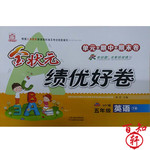题目内容
assigned to me are not going to read themselves and that I have a difficult month in front of me.
You might think that I don't want to spend my summer reading, but that's not the problem: I love reading.
On the first day of my summer holidays this year, I went to the library and got "A Gathering of Old Men" by
African-American writer Ernest Gaines. I enjoyed it very much. I read all the magazines that my parents
subscribe to and spend about 30 minutes every day with the morning paper. So why do I hate summer reading
for school? Because the books on summer reading lists are often slow-going and just uninviting. Teachers and
librarians don't understand that summer reading can be entertaining as well as educational. They choose books
that a friend of my mother's calls "spinach books": good for you, but not much fun to take in. Every summer,
I read them, hate them and get bitter about the experience.
This bitterness started three years ago when I was about to begin high school. As preparation, my English
teacher told me to read "The Age of Innocence" by American author Edith Wharton. I'm sure there are many
people who enjoyed "The Age of Innocence"-some might even say it's their favorite book.
But I don't think any of these people read it as a 14-year-old boy on his summer vacation.
"The Age of Innocence" is the story of a forbidden romance in New York 100 years ago. At 14, my only
experience with romance was my love for baseball. I couldn't imagine being in love, much less being in love
in 1900. "The Age of Innocence" was totally different to my life.
Most of my required summer reading has been like that-books written in a style that plays up the adjectives
and plays down the verbs. I guess teachers don't think exciting plots make for "good literature". To me, though,
a good writer describes events and characters in a way that makes the reader want to know what happens next.
If I were making up a summer reading list, it would include "The Friends of Eddie Coyle" by George V.
Higgins, "The Right Stuff" by Tom Wolfe, and "Into Thin Air" by Jon Krakauer. These are all books that have
literary value but, just as important, can also entertain kids on vacation. If the teachers could stand a little fun
in the books they assign, my Augusts would be a lot more enjoyable.
B. he hates the English teacher assigning homework
C. he is to read the books boring and not right for kids
D. he hates August
B. out of date
C. pure
D. entertaining and educational
B. he can learn a lot more from them
C. they are of literary value, and enjoyable
D. he has to do as teachers tell him to
B. describes events and characters in different ways
C. is learned
D. is full of imagination
B. Why Can't Teachers Set Us Fun Books?
C. Teachers, Don't Set Us Any Reading Assignments
D. Teachers, Set Us Free

 99加1领先期末特训卷系列答案
99加1领先期末特训卷系列答案 百强名校期末冲刺100分系列答案
百强名校期末冲刺100分系列答案 好成绩1加1期末冲刺100分系列答案
好成绩1加1期末冲刺100分系列答案 金状元绩优好卷系列答案
金状元绩优好卷系列答案
| |||||||||||||||||||||||||||||||||||||||||||||



